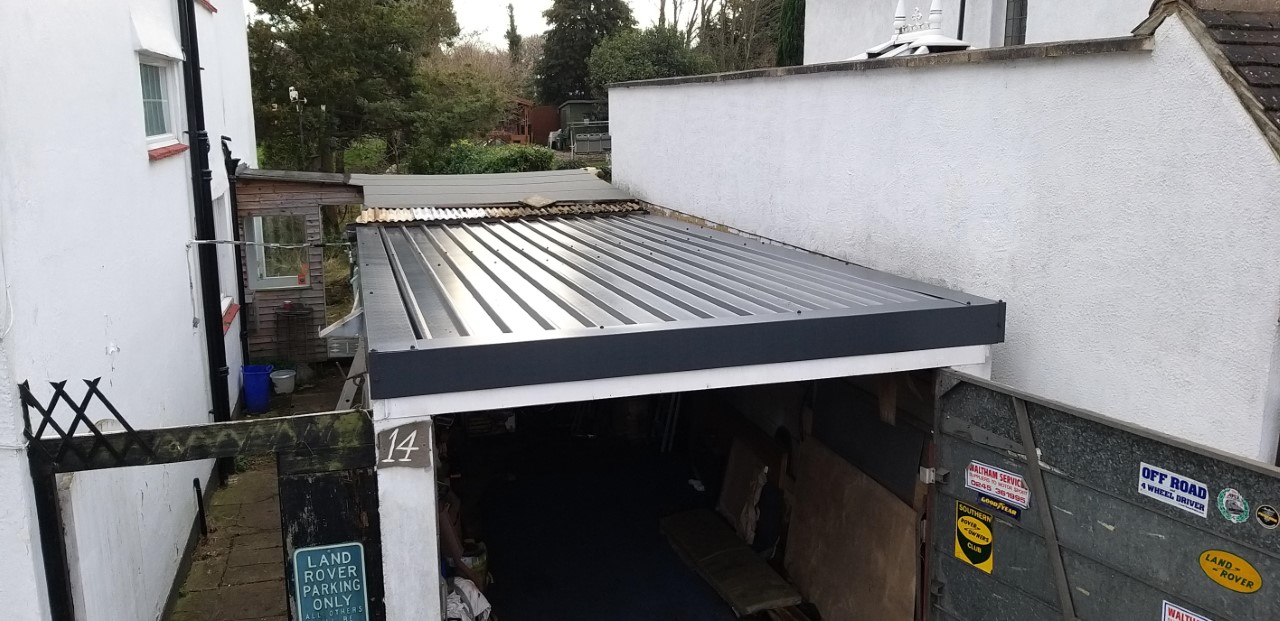Roofs 4 Garages > Our Product

Condensation control fleece lining for single skin metal buildings.
The Dripstop condensation control fleece is an effective affordable and convenient way to deal with the problem of condensation on insulated metal roofs. It is a self-adhesive fleece applied to the underside of metal sheets during the profiling process and can be used in virtually any environment where condensation is a problem.
Dripstop absorbs around 1kg of water per square metre of roof, with water being stored in the fleece. when temperature rise the water starts to evaporate back into the air and the Dripsop fleece dries out.
The fleece is available on 32/1000RSP, MW5RS, 38/914R and sinusoidal profiles. Benefits include:
When the temperature and humidity conditions reach the dew point, moisture condenses on the underside of the un-insulated metal roof. If there is a lot of condensation, drops of water form and start to fall causing damage to the contents below. The traditional method for dealing with condensation is to try to insulate the roof so that the temperature on the panel never reaches the dew point.
An insulated roof is more expensive than a single skin construction and is not always the most suitable choice. If left unchecked condensate can cause damage to stored goods and material, worsen insulation capabilities, disturb livestock and related activities inside the building and even damage the roof by accelerating corrosion and allowing frost to form.
When metal roof sheeting is used as a single skin covering and the outside temperature inside a building (usually during the night or in the winter) the roof becomes colder than the temperate inside. When warm air inside the building comes into contact with the cold roof panel it suddenly cools down which immediately increases the relative humidity of the air.
When vapour reaches the dew point, condensation occurs. Condensation is the most common form of dampness encountered in buildings. The air inside can have a high level of relative humidity due to the activity of the occupants and when this air comes into contact with cold surfaces such as cold roofs and walls it can condense, causing dampness.



When building a cold metal roof general construction standards should be followed. The following guidance is not comprehensive but it does highlight some of the key considerations:
